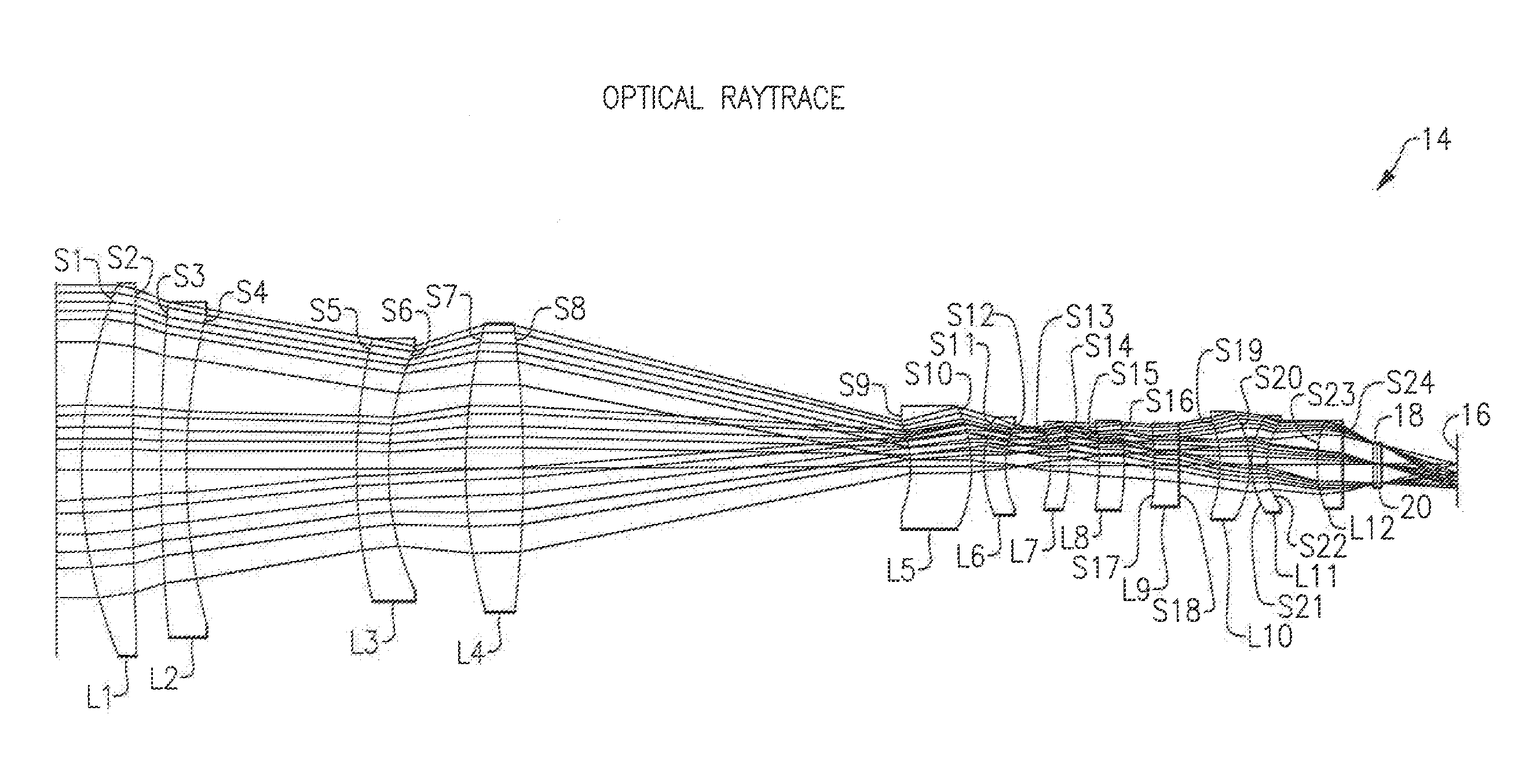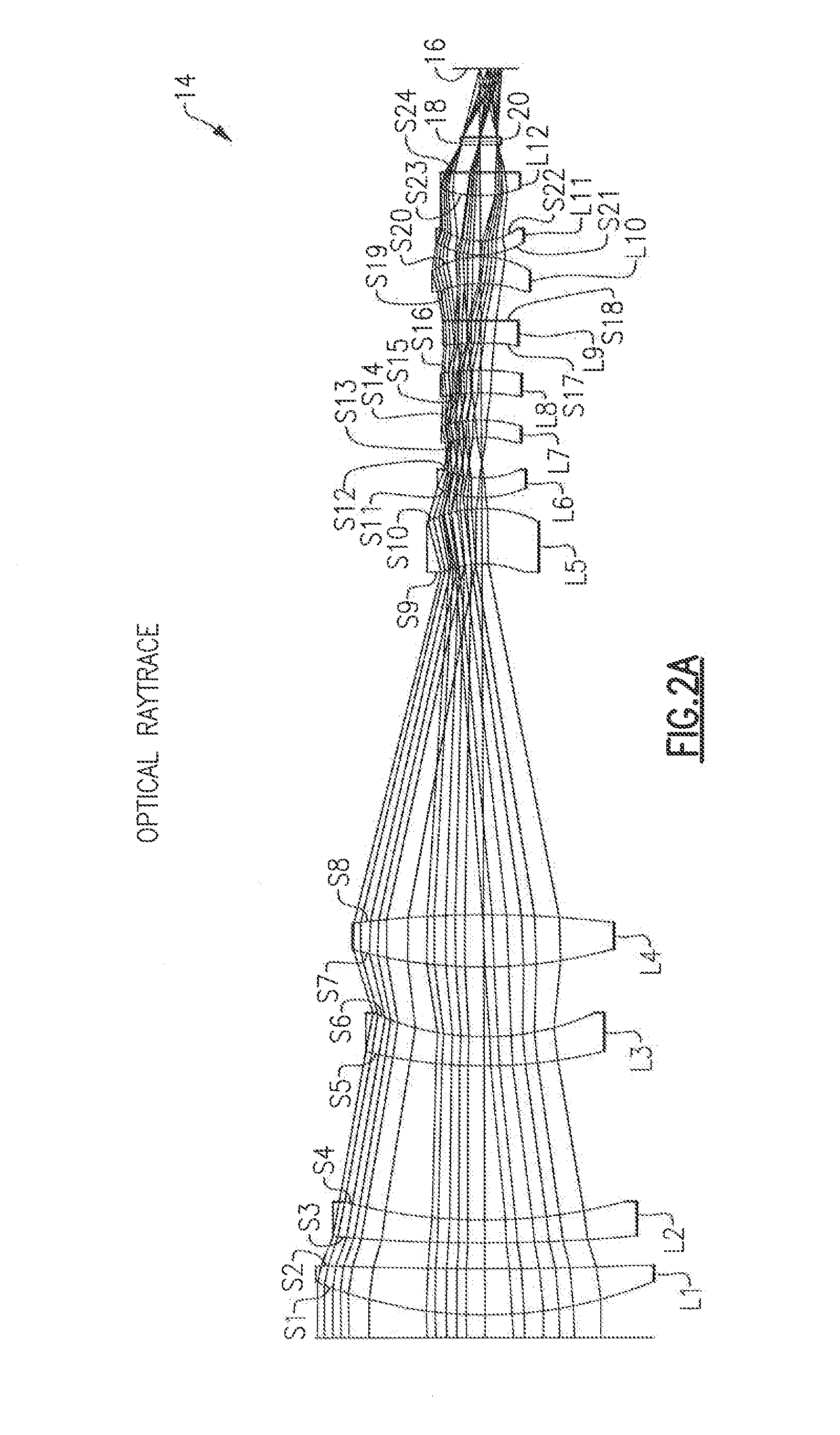Dual-band passively athermal optical lens system
a passive athermal and optical lens technology, applied in the field can solve the problems of difficult to locate imaging or optical lens systems, compound imaging problems of both mid-wave infrared and long-wave infrared wavelengths, and achieve the effect of not significantly increasing the overall weight of optical lens systems, facilitating corresponding compensation, and strong and durabl
- Summary
- Abstract
- Description
- Claims
- Application Information
AI Technical Summary
Benefits of technology
Problems solved by technology
Method used
Image
Examples
Embodiment Construction
[0040]The present invention will be understood by reference to the following detailed description, which should be read in conjunction with the appended drawings. It is to be appreciated that the following detailed description of various embodiments is by way of example only and is not meant to limit, in any way, the scope of the present invention.
[0041]A preferred embodiment of the lens optical system 14, is diagrammatically shown in FIG. 1. The lens optical system 14 has an overall length, i.e., from a leading surface S1 of the first entrance optical component or lens L1 to surface S29 of the focal plane 16 of the lens optical system 14, of 443.050 mm (17.44 inches). However, it is to be appreciated that the overall length of the lens optical system 14 can vary, from application to application, without departing from the spirit and scope of the present invention. Preferably, the overall length of the optical lens system 14 will typically range between 300 mm (11.81 inches) and 700...
PUM
 Login to View More
Login to View More Abstract
Description
Claims
Application Information
 Login to View More
Login to View More - R&D
- Intellectual Property
- Life Sciences
- Materials
- Tech Scout
- Unparalleled Data Quality
- Higher Quality Content
- 60% Fewer Hallucinations
Browse by: Latest US Patents, China's latest patents, Technical Efficacy Thesaurus, Application Domain, Technology Topic, Popular Technical Reports.
© 2025 PatSnap. All rights reserved.Legal|Privacy policy|Modern Slavery Act Transparency Statement|Sitemap|About US| Contact US: help@patsnap.com



